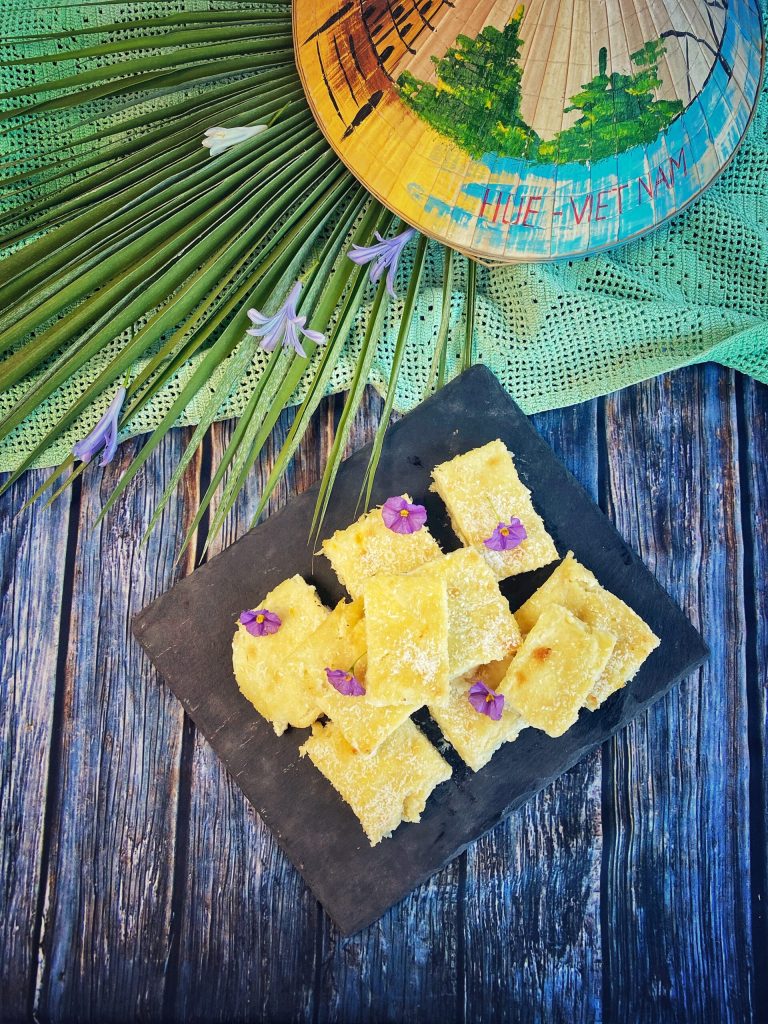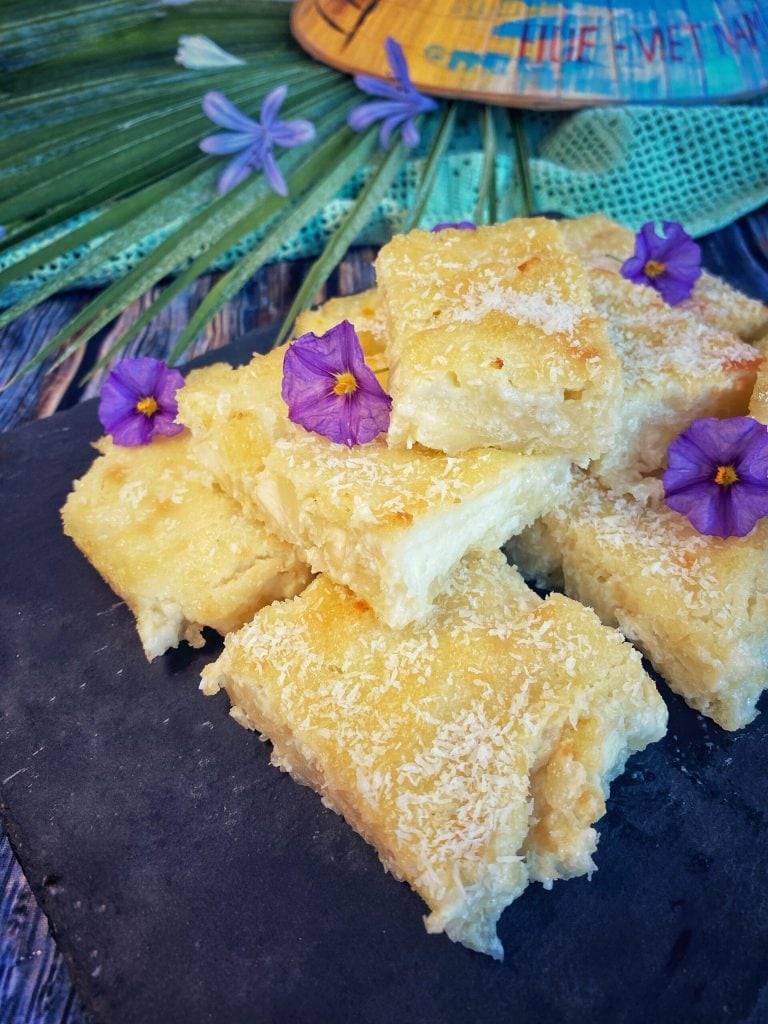The Bánh khoai mì is a Vietnamese cake made from grated cassava, sugar, and coconut milk.
There are two varieties:
• Bánh khoai mì nướng – baked (the following recipe)
• Bánh khoai mì hấp – steamed (much less common)
There is also a similar cake made with taro called bánh khoai môn.
Naturally gluten and lactose-free, there is a similar version in the Philippines called Cassava cake. However, it differs in the upper layer, which consists of custard made from coconut milk, and the use of condensed milk as an ingredient.
On the blog, you can find several recipes based on cassava or cassava flour such as:

- Difficulty: Easy
- Cost: Economical
- Preparation time: 10 Minutes
- Portions: 8 People
- Cooking methods: Oven
- Cuisine: Vietnamese
- Seasonality: All Seasons
Ingredients for Bánh khoai mì:
- 1.1 lbs cassava (cleaned)
- 3/4 cup sugar
- 1 2/3 cups coconut milk
- 1 egg
- 1 pinch salt
- 2 tbsp cassava starch
- 1 tsp vanilla
- to taste grated coconut (shredded)
Steps
Grate the cassava. Combine the sugar, coconut milk, egg, a pinch of salt, 1/3 cup of water, cassava starch, and vanilla.
Transfer the mixture to a square baking pan and bake in the oven at 356°F for 50 minutes.
Sprinkle with grated coconut and serve by cutting into rectangles.

FAQ (Questions and Answers)
What is the recipe for the Filipino Cassava cake?
Cassava is known as kamoteng kahoy and balinghoy in the Philippines.
The cassava cake is a type of bibingka (traditional baked cakes), which originated from adopting indigenous recipes, but using cassava instead of the traditional
galapong batter.
With Latin American roots, cassava was first introduced to the Philippines in the 16th century.
Find the recipe for the Cassava cake here.

